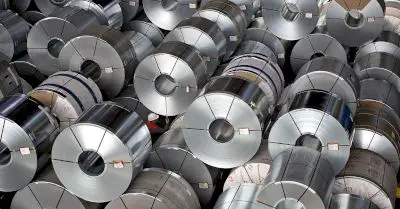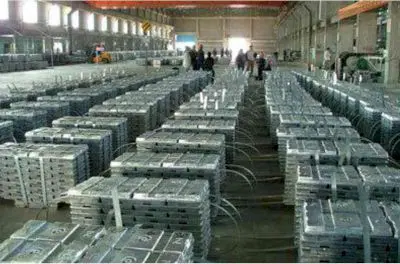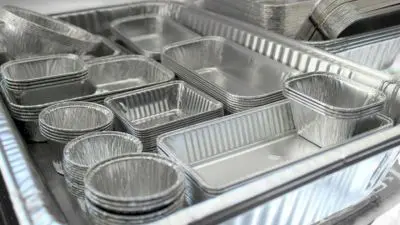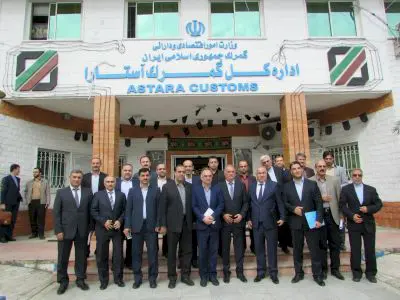Metals Prices in Iran
Iran in the Middle East country has a strategic position in the Persian Gulf region, and the Strait of Hormuz to its south is a vital route for crude oil transportation. Most metals are silvery, high-density, and relatively soft solids that deform easily. There are air routes between most of the world's major countries and Iran's top cities. Metals are now mainly used in the manufacture of industrial tools. Oil and natural gas are Iran's most important exports, and imports are: non-electrical machinery (17 percent of total imports), iron and steel (14 percent), chemicals and related products. The countries of the Middle East have a significant share of iron resources
Add your import and export orders to this list
Warning: Undefined variable $formTitle in /home/anbar/domains/anbar.asia/anbar/inc/html/desktop/orderform.php on line 10
Warning: Undefined variable $marketName in /home/anbar/domains/anbar.asia/anbar/inc/html/desktop/orderform.php on line 12
Warning: Undefined variable $location in /home/anbar/domains/anbar.asia/anbar/inc/html/desktop/orderform.php on line 12
If you want to trade in the , please join in Anbar Asia. Your order will be shown here, so the traders of contact you

Iran is the world's fourth-largest oil producer, with 9.4 percent of the, and the world's first-largest gas reserves with 18 percent of the world's proven gas reserves. Almost all metals are solid, shiny, and white-gray. The Customs of the Islamic Republic of Iran is a governmental organization subordinated to the Ministry of Economic Affairs and Finance. The base metals industry is the most important export industry in the Middle East after oil and petrochemicals
- Iran Copper Market
- Iran Gold Market
- Iran Steel Market
- Iran Zinc Market
- Iran Aluminum Market
- Iran Silver Market

Many global mining experts predict that at current consumption rates, the planet's economy over the next 70 years will undermine the current known reserves, which are likely to consume half of the world's current metals. Shortly, increasing dependence on essential mineral imports, plus global competition for scarce resource resources, will increase prices and bargain for exporting countries.
Read More ...
Gold is a chemical element with the symbol Au and atomic number 79 and is one of the elements with high atomic number that exists in nature. Gold is pure, a shiny metal, reddish yellow, dense, soft, malleable and flexible.
Read More ...
Zinc is found in several ores, the principal ones being zinc blende (zinc sulfide) and calamine (zinc silicate). The principal mining areas are in China, Australia and Peru. Commercially, zinc is obtained from its ores by concentrating and roasting the ore, then reducing it to zinc by heating with carbon or by electrolysis. World production is more than 11 million tonnes a year.
Read More ...
The interesting thing about silver is that today, the metal is used for solder and solder alloys, batteries, dentistry, LED chips, nuclear reactors, photovoltaic (or solar) energy, RFID chips to track packages or shipments worldwide, Semiconductors, touch screens, wood preservatives, and many other industrial applications.
Read More ...
When the concentration of aluminum in the environment increases, it has severe effects on human health. Water-soluble aluminum is dangerous. Particles of aluminum that dissolve in water are called ionic particles, for example, aluminum chloride. Other ways to increase the amount of aluminum in the body are to breathe and make skin-to-skin contact with aluminum.
Read More ...
About two-thirds of the earth's copper is found in igneous rocks, and about a quarter occurs in sedimentary rocks. This metal is flexible and flexible and conducts heat and electricity well, which is why it is widely used in electronics and wiring.
Read More ...
The assigned missions are prepared by the Customs of the Islamic Republic of Iran and after the approval of the Minister of Economic Affairs and Finance, are approved by the Council of Ministers. The Customs of the Islamic Republic of Iran include the Central Headquarters of the Iranian Customs and the Customs and Enforcement Customs. It is as follows:
Read More ...STEEL INDUSTRY IN IRAN. In 1938, an agreement was reached, after much study and preparation, between Iran and a German consortium (Demag-Krupp) for the construction of two blast furnaces with a daily production of 150 tons, a steel factory, a rolling mill, a wire-drawing mill, a foundry, a wrought ironworks, a coke crusher, a power plant, and some ancillary industries such as a lime plant, an ammonia and benzol plant, and a tar distillation plant. The original site was planned to be south of Tehran near the cement works, but Karaj was chosen instead, because of its more suitable water supply. In 1939, Reżā Shah laid the first foundation stone, and, although work proceeded as planned, the works were still unfinished in 1941 when the Allies invaded Iran. Since then, “more has been said and less done about a steel industry than any other industry in Iran” (Echo of Iran, 1965, p. The project was only realized in 1963, when an agreement was reached between a private Iranian and a Swedish company to build the scrap metal steel mill. Meanwhile, the army’s munitions factories acquired a five-ton foundry and the Iranian State Railways a 10-ton per day electric arc foundry. It produced mainly cast-iron pipes (Echo of Iran, 1963, pp. The basis for future steel production in Iran was laid by the signing of a contract with the USSR in 1965 to finance and erect a steel plant in Isfahan (National Iranian Steel Company, NISC). Repayment of the loan was done through deliveries of natural gas from Iran to the USSR. The private-sector Iran National Steel Industries Group (INSIG, Goruh-e Melli-ye Ṣanʿati-ye Fulād-e Irān) erected a second 85,000 tons per year rolling mill also at Ahvāz, in 1969, and ordered a third one 120,000 tons per year) to produce structural steel by rolling imported, semi-finished steel products. Later the two plants were referred to as Navard Iran. Two other bloom plants for processing sponge iron (400,000 tons capacity) were erected in 1972 by the Industrial Group; they were nationalized after the Islamic revolution and are now managed by the National Iranian Steel Industries Company (NISCO). The development of new methods of direct reduction processing technology provided a viable alternative for the government, given the fact that Iran had rich resources of natural gas and various required raw materials, in particular, iron ore. After the Islamic Revolution in 1979, fundamental changes took place in the Iranian Steel Industry Organization. The two state-owned companies were merged, and NISCO was affiliated to the former Ministry of Mines and Metals, and the Ministry of Industries and Mines was established. NISCO now directs and supervises the Iranian steel industry from the exploration stage of its relevant raw materials up to the marketing of its products in domestic and international markets. During the Iran-Iraq war (1980-88) the steel industry development lost its impetus to some extent. One of the first new projects was the construction of the Iran Alloy Steel Plant (Fulādhā-ye Alyāji-ye Irān) at Yazd, which started in 1988 and became operational in 1998. Another new project was the Mobarakeh Steel Complex (Mojtameʿ-e Fulād-e Mobāraka), which is the biggest industrial project in Iran. The Mobarakeh Steel Company is affiliated to NISCO and is also the first integrated flat steel production plant in the Islamic Republic of Iran based on DRI [“direct reduced iron” technology. The expansion contract was signed between Iran and three Italian companies on a buy-back basis. see Internet Source 1; for the steel plants of Iran in general, see Internet Source 6). 5 slab and lime calcining plant, was signed with a consortium of SMS Demag AG, Iran International Engineering Company (IRITEC) and its subsidiary registered in Italy, Irasco. direct reduction iron facility was signed by Mines & Metals Engineering GmhH (MME). Not only port access and capacity are important for Iran’s steel industry, but also the railway system. World steel production in 2000 reached 850 million tons, of which Iran’s share was 6. 7 million tons; Iran then ranked twenty-third among countries, and twenty-first in 2004 (see International Iron and Steel Institute for the respective years). NISCO reported that the annual production of steel in Iran for 1382 (2003/04) was estimated at 8. 13 million tons—the first time that Iran’s steel production would surpass eight million tons. This meant that Iran was able to satisfy 70 percent of domestic demand, while at the same time exporting some 1. NISCO has also taken steps toward upgrading the quality of its products and improving the management system with due consideration to environmental protection and better working conditions (NISCO-Iran; see Internet Source 5). Iran was scheduled to produce some 8. This is because, unlike many countries in the world which use concrete and bars, Iran uses iron slates in construction, which also adds to the instability of its buildings. Despite all, Iran managed to export 1. Iran’s steel is capable of competing with European products due to its quality and price. The prospects of Iran’s steel industry seem favorable due to its large and rich raw material resource base, its rich and cheap energy resources, human capital and technical know-how (as to the latter see Noorbakhsh, pp. Iran not only added new capacity during the last 20 years that significantly reduced the import bill and even made export of steel products possible, but it also developed its own technological capacity. Iran, for example, developed its own direct reactivation method of producing iron with 96 percent which works more effectively than the three other conventional methods. Echo of Iran, Iran Almanac, Tehran, 1961-77. Laurence Paul Elwell-Sutton, Modern Iran, London, 1941. Willem Floor, in Iran, 1900-1941, Durham Occasion Papers 23, Durham, England, 1984. Raj Narain Gupta, Iran. Iran Yearbook, Bonn, 1989-90. Hans-Joachim Koellner, “Die Grundlagen der Irans unter besonderer der wichtigsten iranischen Ph. Cusworth), “Senior Effectiveness and their Required Categories of Managerial Skills: The Case of the Steel Industry in Iran,” in F. Roberts, Iran. [UNIDO] United Nations Industrial Development Organization, Economist Intelligence Unit, Islamic Republic of Iran. Idem, Islamic Republic of Iran. ʿAli Zāhedi, Ṣanāyeʿ-e Irān baʿd az jang, Tehran, 1945. International Trade Centre, Trade select "Iran" “Iran Alloy Steel “Iran: Steel Industry com; select "Iran". iransteel.
Read More ...
Iran metal fabrication to different sectors, such as residential, commercial and industrial. Iran Metal Fabrication Analysis, by Equipment Iran Metal Fabrication Analysis, by Application. Iran Metal Fabrication Analysis, by End-User Iran Metal Fabrication Iran Metal Fabrication Equipment Market, by Equipment Type. Iran Metal Fabrication Equipment Market, by Application. Iran Metal Fabrication Equipment Market, by End-User Industry.
Read More ...
US hits Iran with further steel, aluminum, copper trade sanctions. US aims to stop Iran importing metals for nuclear, military purposes. Iran source says new sanctions not taken seriously. London — The US has broadened the scope of its sanctions on steel, stainless steel, aluminum and copper trade with Iran in a move to stop imports into the country of specialized metals that it says could be used in Iran's nuclear, ballistic missile and military programs, deemed by the US to pose a grave threat to international peace and security. Most of the products had already been targeted by secondary sanctions against Iran, previously published by the US. US Secretary of State Mike Pompeo late July 30 announced the State Department has identified 22 specific materials that it alleges are used in connection with Iran's nuclear, military, or ballistic missile programs. "Those who knowingly transfer such materials to Iran are now sanctionable pursuant to Section 1245 of the Iranian Freedom and Act," Pompeo said in a statement. The sanctions also cover trade in graphite and raw or semi-finished metals which may be used in Iran's construction sector, which according to the US is controlled by Islamic Revolutionary Guard Corps (IRGC). No official reaction was available from Iran on July 31 due to a local holiday. However an informed Iranian observer told S&P Global Platts that "the new sanctions are not taken very seriously because all of the metals were previously under the OFAC [Office of Foreign Assets Control] sanctions. Supply and trade of steel, aluminum, graphite and coal with Iran have been restricted by US secondary sanctions from August 2019 but Iran's metals and minerals export trade has continued since then; in fact its steel exports have increased as they are competitive. The 22 products included on the new sanctions list, deemed to be used in connection with Iran's nuclear, military, or ballistic missile programs, are: aluminum 319, 1100, 225, 6061, 6063, 6082 and 7075; aluminium bronze alloy UNS C63600 (CDA alloy 636); aluminium oxide (Al2O3); steel 302, 4130; stainless steel 321 and 316; A877 steel and A228 steel, 350 maraging steel (also known as maraging steel350); 300 maraging steel (also known as maraging steel300); UNS Cl7200-TDO1 (beryllium copper); UNS C37000 – CuZn38Pb1; tungsten copper and aluminum powder with purity above 98%, Pompeo stated. No information was given on who the current suppliers of these products to Iran are, and the Iranian observer consulted said he was unable to specify origins, as this is classified information within Iran. Following the previous imposition of secondary metals trade sanctions, the US stepped up its sanctions on Iran in the steel area in January 2020, imposing sanctions on exports from most of Iran's steelmakers and international steel traders which have links to Iran. Iranian sources said at the time that Iran's steel and metals trade had carried on largely as normal in spite of both of these sets of sanctions, as much of the metals trade with Iran is with Chinese, other Asian and Middle Eastern parties which have not considered the US sanctions to be applicable to their activities. Much international metals trade with Iran is channeled and paid for via traders in offshore locations including Dubai, with those involved reportedly often turning a blind eye to details on suppliers and end-customers, so long as the product is of acceptable quality and price.
Read More ...
The Iran metal working estimated at USD XX billion in 2016, and is projected to reach USD XX billion by 2022, at a CAGR of XX%, during the forecast period (2017-2022). Iran Metal Working Market Analysis, by Component Type. Iran Metal Working Market Analysis, by Process. Iran Metal Working Market, by Deployment Mode. Iran Metal Working Market, by Sector. Iran Metal Working Industry Overview, Concentration and Structure. Iran Metal Working Market Analysis, by Component Type. Iran Metal Working Market Analysis, By Process Type. Iran Metal Working Market, by Deployment Mode. Iran Metal Working Market, by Sector.
Read More ...
https://iranicaonline.org/articles/steel-industry-in-iran
https://miningglobal.com/supply-chain-and-operations/iran-government-invest-gold-mine-production

